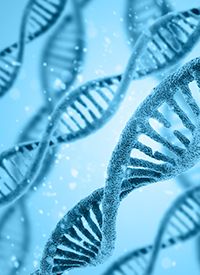Article
Efficacy, Education, and Cost-Effectiveness Mark Latest Biosimilar Developments
Author(s):
A cluster of clinical news in biosimilars has been announced over the last few days, with pooled data sets against reference products, an expected launch of a novel study, and a cost efficiency analysis.

A cluster of clinical news in biosimilars has been announced over the last few days, with pooled data sets against reference products, an expected launch of a novel study, and a cost efficiency analysis. Beyond that, an expert in the field has shared his perspective on the challenges and ongoing need for education on biosimilars.
Take a look at the updates with biosimilars in oncology over the last several days.
Biosimilar Education Necessary to Quicken Integration Into Standard Practice
Increased access to therapeutic agents while decreasing costs is a key goal of biosimilars in oncology. However, education on this class of drugs will be imperative in seeing this through, explained Robert M. Rifkin, MD, FACP, in an interview with OncLive.
“We really have to see these succeed by making them hassle-free for patients and providers,” said Rifkin, of medical oncology/hematology at Rocky Mountain Cancer Centers of The US Oncology Network. “We have to educate the patients on what a biosimilar is and why they are getting it, and hopefully they’ll have a reduction in their out-of-pocket cost.”
While biosimilars are poised to play an integral role in the oncology market, Rifkin added that there still needs to be a deeper understanding of these agents and how the data showcasing their similarity to reference products is different, but it is still high-quality data.
Bevacizumab Biosimilar to Be Combined With PD-1 Agent
A single-center, open-label, dose-escalation, phase I trial (NCT03757936) is combining the proposed bevacizumab (Avastin) biosimilar HLX04 with the novel PD-1 inhibitor HLX10 in patients with advanced solid tumors. The trial will likely launch by the end of September 2019, and Henlius Biotech, the developer of both agents, is currently recruiting patients.
Approximately 30 patients with solid tumors will be given HLX10 at 3 dose levels once every 2 weeks, and the biosimilar bevacizumab at a fixed dose of 5 mg/kg once every 2 weeks. Both agents will be given in combination for ≤2 years or until disease progression.
Pooled Data Demonstrate Rituximab Biosimilar Is Efficacious, Safe
Combined data from head-to-head studies evaluating the similarity of the rituximab (Rituxan) biosimilar CT-P10 (Truxima) compared with the reference product showed that there was similar efficacy and safety between the two drugs, according to a paper published in BioDrugs.1
The systematic review and meta-analysis explored the available data on 11 head-to-head studies, with 3163 patients; 1744 had rheumatoid arthritis (RA) and 1419 patients had non-Hodgkin lymphoma. Results showed that the overall pooled risk ratio (RR) of achieving American College of Rheumatology criteria for 20% improvement in patients with RA at weeks 24 and 48 was 0.99 (P = .70; 95% CI, 0.92-1.06) and 1.04 (P = .73; 95% CI, 0.83-1.31), respectively. For patients with non-Hodgkin lymphoma, the pooled RR of the overall response at week 24 was 1.02 (P = .31; 95% CI, 0.98-1.07).
Filgrastim Biosimilar More Cost-Effective Than Pegfilgrastim
The filgrastim (Neupogen) biosimilar filgrastim-sndz (Zarxio) was found to have improved cost efficiency compared with reference filgrastim and also pegfilgrastim (Neulasta) via an on-body injection device, according to results of a cost simulation in patients with non-Hodgkin lymphoma and lung cancer.2 The device, which is known as Onpro, administers pegfilgrastim through an on-body injector and is said to have failure rates at ≤6.9%, which increases the risk for febrile neutropenia and hospitalization related to the adverse event.
Results showed that for patients with lung cancer, the total incremental cost of the administration of pegfilgrastim via the on-body injective device (PEG-OBI) prophylaxis at varying failure rates and durations ranged from $6,691,969 to $31,765,299 over filgrastim and $18,901,969 to $36,538,299 over filgrastim-sndz.
In patients with non-Hodgkin lymphoma, in scenario 1 of daily injections, the total incremental costs ranged from $6,794,984 to $30,361,345 over filgrastim and $19,004,984 to $35,911,345 over filgrastim-sndz. Moreover, in scenario 2, the incremental costs ranged from $7,003,657‒$32,448,067 over filgrastim and $19,213,657 to $37,998,067 over filgrastim-sndz.
References
- Lee S, Lee H, Kim E. Comparative efficacy and safety of biosimilar rituximab and originator rituximab in rheumatoid arthritis and non-Hodgkin’s lymphoma: a systematic review and meta-analysis [published online August 22, 2019]. BioDrugs. doi: 10.1007/s40259-019-00376-z.
- McBride A, Krendyukov A, Mathieson N, et al. Febrile neutropenia hospitalization due to pegfilgrastim on-body injector failure compared to single-injection pegfilgrastim and daily injections with reference and biosimilar filgrastim: US cost simulation for lung cancer and non-Hodgkin lymphoma [published online August 21, 2019]. J Med Econ. doi: 10.1080/13696998.2019.1658591.









%20(2)%201-Recovered-Recovered-Recovered-Recovered-Recovered.jpg?fit=crop&auto=format)